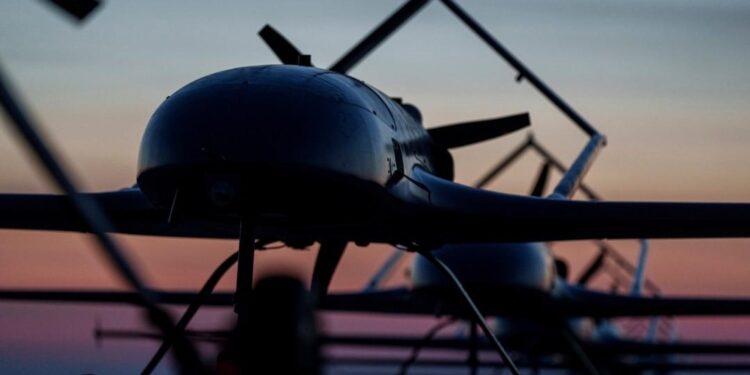Polish authorities have launched a comprehensive investigation into a series of Russian drones that crashed on Polish soil in September, raising serious security concerns amid ongoing regional tensions. Counterintelligence agencies and prosecutors are now leading efforts to uncover the origins, intentions, and potential threats posed by these unmanned aerial vehicles. The developments highlight the increasing complexity of cross-border security challenges facing Poland and its allies, as the investigation unfolds.
Poland Launches Comprehensive Probe into Russian Drone Incursions in September
Authorities in Poland have initiated an extensive investigation following several instances of Russian drone incursions detected throughout September. The probe is being led jointly by national counterintelligence units and prosecutors, who are coordinating efforts to uncover the full scope and intent behind these aerial violations. Initial findings suggest the drones were equipped with surveillance technology designed to gather sensitive information near Poland’s eastern border, raising significant concerns about national security breaches.
The investigation will focus on multiple key aspects, including:
- Drone origin and manufacturing sources
- Flight paths and interception points
- Potential collaboration with foreign intelligence agencies
- Possible security vulnerabilities exposed by the incursions
Authorities also plan to analyze recovered drone components to trace technological signatures and identify operators. Below is an overview of the incident timeline and response phases:
| Date | Event | Response |
|---|---|---|
| Sept 3 | First drone detected near border zone | Alert issued to air defense units |
| Sept 14 | Two drones crash-landed on Polish soil | Forensic teams dispatched |
| Sept 22 | Counterintelligence investigation begins | Legal proceedings initiated |
Counterintelligence Units Coordinate with Prosecutors to Uncover Origins and Intentions
Authorities in Poland have intensified efforts to trace the origins and operational objectives of the Russian-made drones that crashed last September. Counterintelligence units are working in close cooperation with public prosecutors to analyze forensic evidence, communications data, and flight trajectories. This joint approach aims to piece together a comprehensive profile of the drone incursions, shedding light on whether the devices were part of larger coordinated operations or isolated reconnaissance attempts.
Key investigative actions include:
- Interrogation of suspected collaborators and intelligence assets
- Technical analysis of recovered drone components for signatures
- Scrutiny of cross-border electronic transmissions linked to drone maneuvering
- Collaboration with international intelligence agencies to verify findings
The symbiotic partnership between counterintelligence personnel and prosecutors underscores the Polish government’s commitment to unveiling the full scope of foreign interference, holding responsible parties accountable, and reinforcing national security.
| Investigation Focus | Current Status | Next Steps |
|---|---|---|
| Drone Component Analysis | Ongoing | Material forensic review |
| Communication Signal Tracking | Partially Complete | Deep signal triangulation |
| Cross-border Intel Sharing | In Progress | Data exchange with allies |
Experts Recommend Strengthening Airspace Surveillance and Cross-Agency Collaboration
Security analysts highlight an urgent need to enhance the monitoring capabilities across Poland’s airspace, emphasizing that early detection of unauthorized drones can significantly mitigate potential threats. An integrated approach involving state agencies, military units, and civilian air traffic control is seen as vital to establish a comprehensive defense network. Experts stress that deploying advanced radar systems combined with AI-driven analytics could revolutionize real-time surveillance and threat assessment.
Furthermore, successful response to drone incursions demands seamless communication channels between counterintelligence bodies, law enforcement, and prosecutorial authorities. Coordination challenges in past incidents revealed gaps that adversaries could exploit. The proposed framework includes:
- Joint command centers for data sharing and rapid decision-making
- Unified protocols for evidence preservation and legal proceedings
- Regular inter-agency drills to enhance operational readiness
| Agency | Role in Airspace Security | Key Capability |
|---|---|---|
| Counterintelligence Service | Threat assessment and intelligence gathering | Cyber surveillance |
| Prosecutor’s Office | Legal investigation and prosecution | Case management |
| Air Force Command | Military airspace defense | Rapid drone interception |
Final Thoughts
As investigations continue, Polish counterintelligence agencies and prosecutors remain focused on uncovering the origins and intent behind the Russian drones that crashed last September. The case highlights growing concerns over national security and regional stability amid ongoing geopolitical tensions. Authorities have pledged transparency as they work to piece together the circumstances surrounding the incidents, while closely monitoring any potential implications for Poland’s defense and broader international relations. Further updates are expected as the inquiry progresses.
















